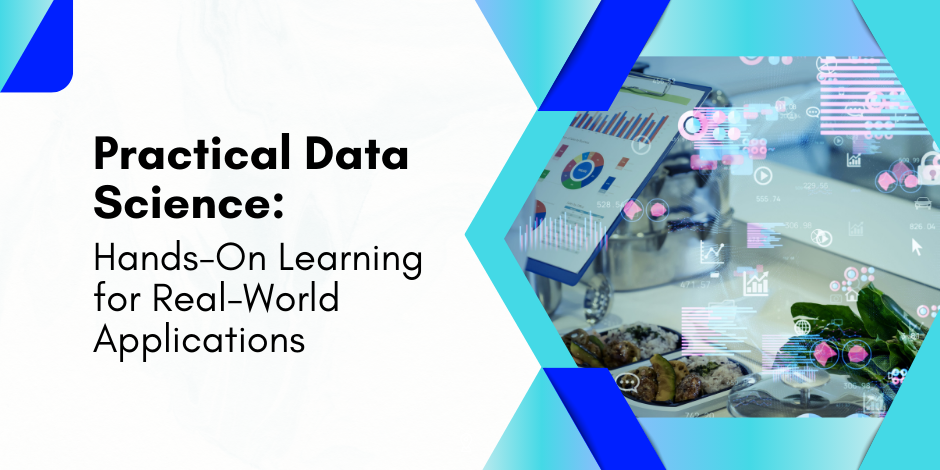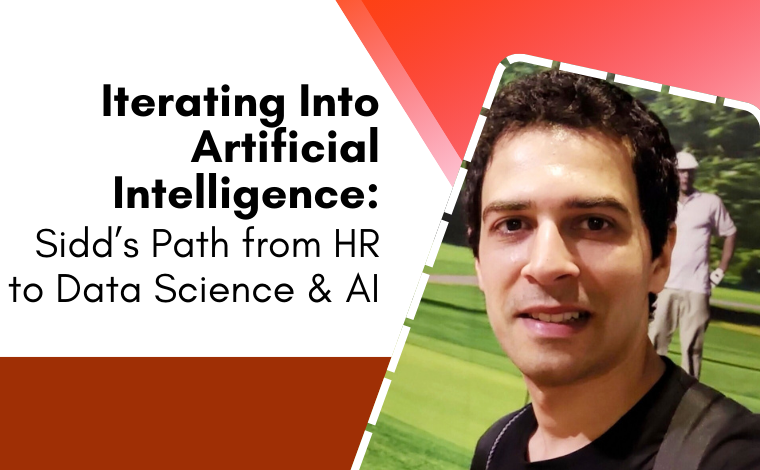Practical Data Science: Hands-On Learning for Real-World Applications

Stay Informed With Our Weekly Newsletter
Receive crucial updates on the ever-evolving landscape of technology and innovation.
In today’s fast-paced and data-driven world, practical data science has become increasingly important.
Understanding the fundamentals of practical data science is essential for anyone wanting to delve into this field.
With practical hands-on learning, individuals can gain the necessary skills to apply data science in real-world scenarios.
Understanding the fundamentals of data science

Data science is an interdisciplinary field that combines scientific methods, processes, algorithms, and systems to extract knowledge and insights from structured and unstructured data.
With the exponential growth of data volumes, data science plays a pivotal role in various industries, including healthcare, finance, and marketing.
By extracting meaningful information from complex datasets, businesses can make data-driven decisions that lead to competitive advantages.
The importance of data science in today’s world
With the advent of technologies like the Internet of Things (IoT) and the proliferation of social media platforms, the amount of data generated daily is staggering.
Data science is pivotal in organising and analysing data, empowering organisations to unveil patterns, make precise predictions, and attain a profound comprehension of customer behaviour and preferences.
For instance, statistics reveal that 7 out of 10 consumers abandon a website if it takes longer than three seconds to load.
Armed with this insight, companies can optimise their website for user experience, thereby extending the duration potential customers spend on their page.
Such insights enhance user experience and contribute to optimising website performance, driving increased engagement, conversion rates, and overall business success.
Additionally, practical data science fuels advancements in artificial intelligence and machine learning, leading to the development of intelligent systems and algorithms that provide deeper insights.
Key concepts and terminologies in data science
Before diving into practical data science, it is essential to grasp the key concepts and terminologies. Some fundamental terms include:
- Data: Raw facts and figures that hold valuable information.
- Data cleansing: The process of removing irrelevant, inaccurate, and inconsistent data from a dataset.
- Feature: A measurable aspect of the data that can aid in prediction or classification.
- Machine learning: A subset of artificial intelligence that enables computers to learn from data and make predictions without being explicitly programmed.
- Predictive modelling: The process of creating a mathematical model that predicts future outcomes based on historical data.
Getting started with practical data science
Embarking on a journey to learn practical data science requires choosing the right tools and setting up a conducive environment for analysis and experimentation.
Choosing the right tools for data science
There is an abundance of data science tools available, each catering to different needs and skill levels. Some popular tools include:
- R: A programming language widely utilised for statistical analysis and machine learning.
- Python: A versatile programming language with a multitude of libraries specifically designed for practical data science tasks.
- Tableau: A powerful data visualisation tool that helps in presenting insights in a visually appealing manner.
Choosing the right tool depends on factors such as the type of analysis, data size, and personal preferences.
Exploring and experimenting with various tools is advisable to find the best fit for a specific project.
Setting up your data science environment
Once the appropriate tools have been selected, setting up a data science environment is essential.
This typically involves installing the necessary software packages and libraries, configuring the development environment, and ensuring the availability of relevant data sources.
Online tutorials and forums can be invaluable resources for guidance in this process, as well as educational programs like the Institute of Data’s Data Science and AI program.
Moreover, data science platforms like Anaconda and Jupyter Notebook provide preconfigured environments that streamline the setup process, making it easier to get started.
Data collection and preparation

Data collection is a critical step in any data science project. It involves gathering relevant data from multiple sources and ensuring its quality and suitability for analysis.
Techniques for data collection
Various techniques can be employed to collect data, including surveys, web scraping, and data mining.
Surveys allow for targeted data collection by directly querying individuals or organisations and can provide valuable insights through structured responses.
Web scraping involves extracting data from websites, which can be particularly useful for acquiring large amounts of textual or tabular information.
Data mining, on the other hand, involves extracting patterns and knowledge from large datasets using machine learning and statistical methods.
Preparing and cleaning your data for analysis
Since raw data is often messy and inconsistent, data cleaning is a crucial step in the data science workflow.
Cleaning involves removing duplicate entries, handling missing values, and standardising formats. It is essential to ensure data integrity and accuracy to obtain reliable results.
Additionally, data preprocessing techniques, such as normalisation and feature engineering, can be applied to improve the quality and usefulness of the data for analysis.
Data analysis and interpretation
Data analysis is the core of practical data science.
It involves exploring and interpreting the collected data to extract meaningful insights and patterns.
Exploring and visualising your data
Exploratory data analysis (EDA) is a crucial step in understanding the characteristics and relationships within a dataset.
Techniques such as summary statistics, scatter plots, and histograms can provide initial insights.
Visualisation plays a vital role in EDA, as it allows for the identification of trends, outliers, and patterns that may otherwise remain hidden in raw data.
Data visualisation tools like Matplotlib and ggplot are commonly used to create informative and visually appealing plots and charts.
Applying statistical methods for data analysis
Statistical methods play a significant role in data analysis, helping to quantify and validate relationships between variables.
Techniques like regression analysis, hypothesis testing, and analysis of variance (ANOVA) can provide statistical evidence to support conclusions drawn from data.
By applying appropriate statistical techniques, data scientists can gain deeper insights, make predictions, and draw conclusions with a higher degree of confidence.
Machine learning and predictive modelling

Machine learning is a subset of artificial intelligence that focuses on developing algorithms capable of learning from data and making predictions without being explicitly programmed.
Introduction to machine learning in data science
Machine learning algorithms can be categorised into two main types: supervised learning and unsupervised learning.
Supervised learning involves training a model using labelled data to predict a target variable, while unsupervised learning aims to discover patterns and structures in unlabeled data.
Both approaches have a wide range of applications, from classification and regression to clustering and anomaly detection.
Building predictive models with your data
Building predictive models is a key objective in practical data science.
By utilising machine learning algorithms, data scientists can develop models that make accurate predictions and drive informed decision-making.
The process of building a predictive model involves selecting an appropriate algorithm, training the model using historical data, and evaluating its performance using validation techniques.
Iterative model refinement and parameter tuning can further improve predictive accuracy.
Conclusion
Hands-on learning is invaluable for individuals seeking to apply practical data science in real-world applications.
Understanding the fundamentals, setting up a suitable environment, collecting and cleaning data, performing thorough analysis, and building predictive models are essential steps on the journey to becoming a proficient data scientist.
By harnessing the power of data science, organisations can gain a competitive edge and make informed decisions that drive success in today’s data-driven world.
Want to learn more about practical data science? Download a copy of the Institute of Data’s comprehensive Data Science & AI program outline for free.
Alternatively, we invite you to schedule a complimentary career consultation with a member of our team to discuss the program in more detail.





